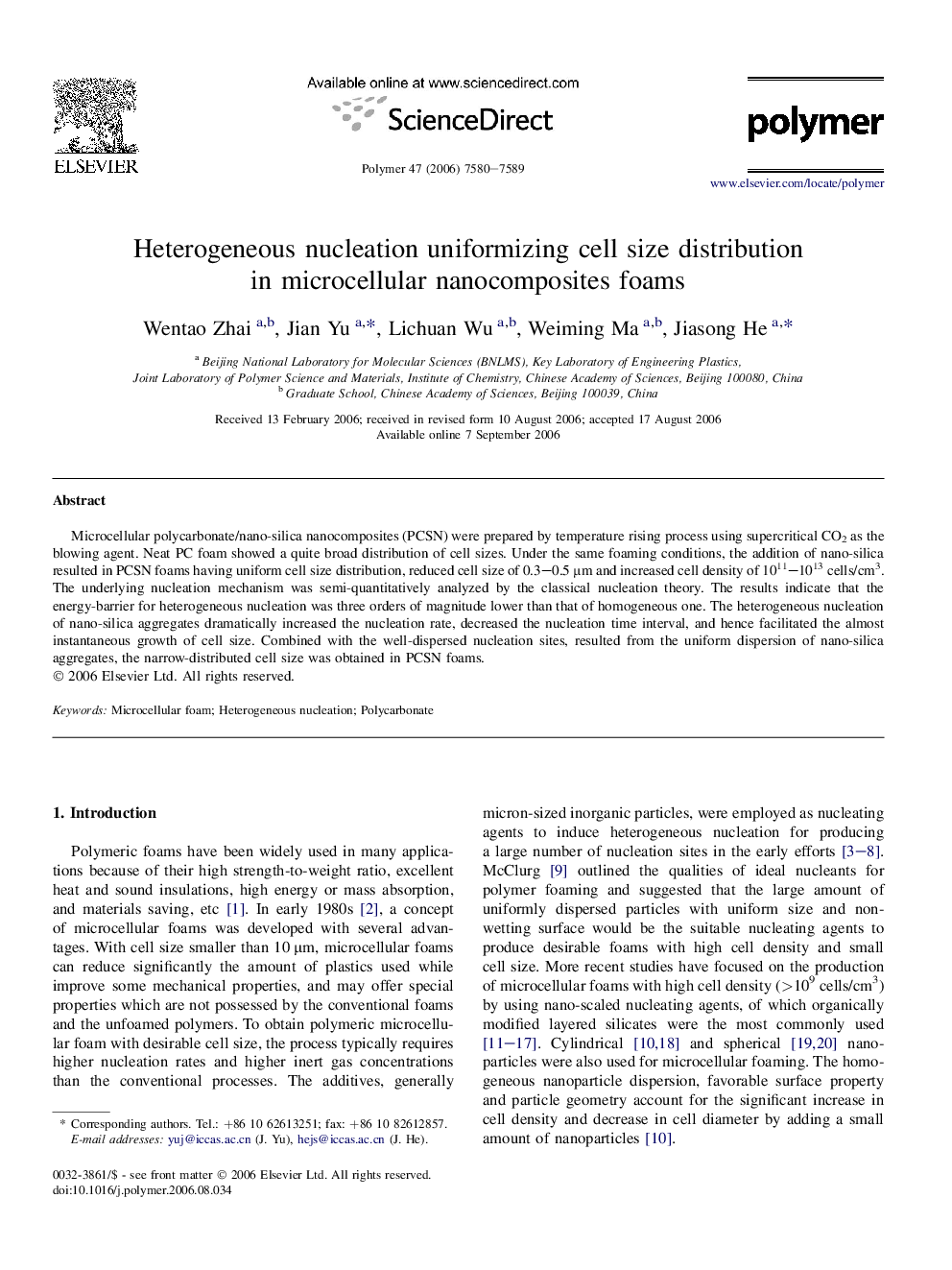| Article ID | Journal | Published Year | Pages | File Type |
|---|---|---|---|---|
| 5188814 | Polymer | 2006 | 10 Pages |
Abstract
Microcellular polycarbonate/nano-silica nanocomposites (PCSN) were prepared by temperature rising process using supercritical CO2 as the blowing agent. Neat PC foam showed a quite broad distribution of cell sizes. Under the same foaming conditions, the addition of nano-silica resulted in PCSN foams having uniform cell size distribution, reduced cell size of 0.3-0.5 μm and increased cell density of 1011-1013 cells/cm3. The underlying nucleation mechanism was semi-quantitatively analyzed by the classical nucleation theory. The results indicate that the energy-barrier for heterogeneous nucleation was three orders of magnitude lower than that of homogeneous one. The heterogeneous nucleation of nano-silica aggregates dramatically increased the nucleation rate, decreased the nucleation time interval, and hence facilitated the almost instantaneous growth of cell size. Combined with the well-dispersed nucleation sites, resulted from the uniform dispersion of nano-silica aggregates, the narrow-distributed cell size was obtained in PCSN foams.
Related Topics
Physical Sciences and Engineering
Chemistry
Organic Chemistry
Authors
Wentao Zhai, Jian Yu, Lichuan Wu, Weiming Ma, Jiasong He,
